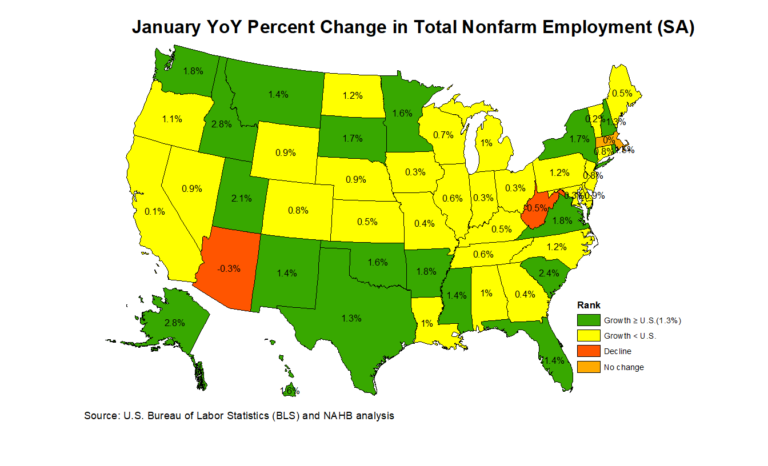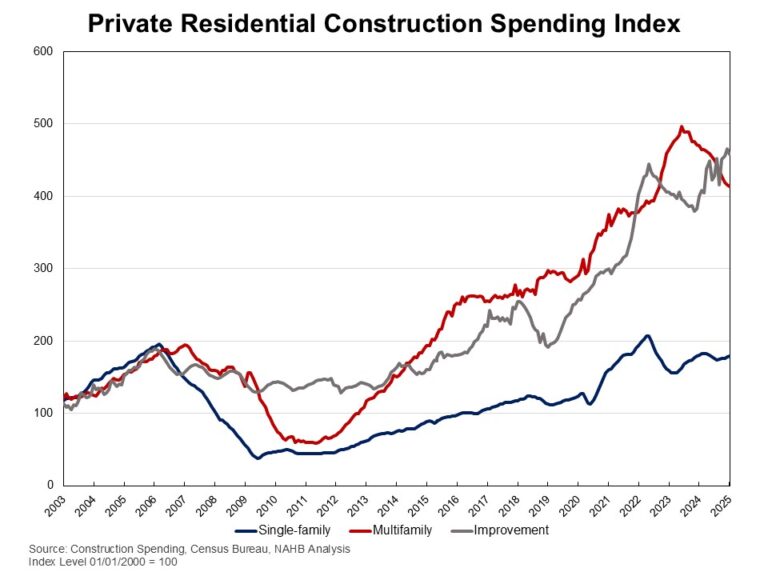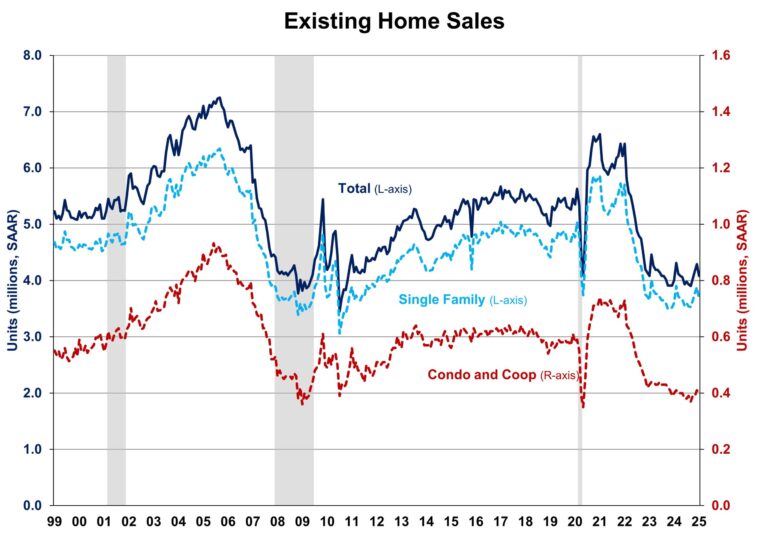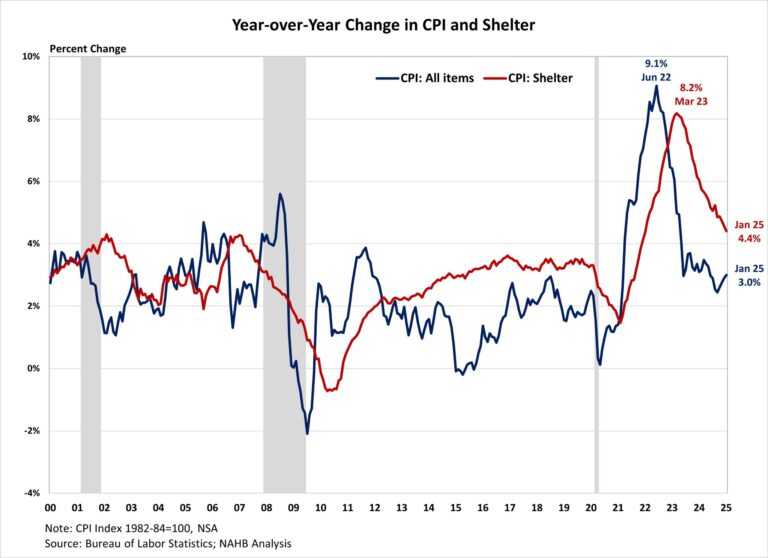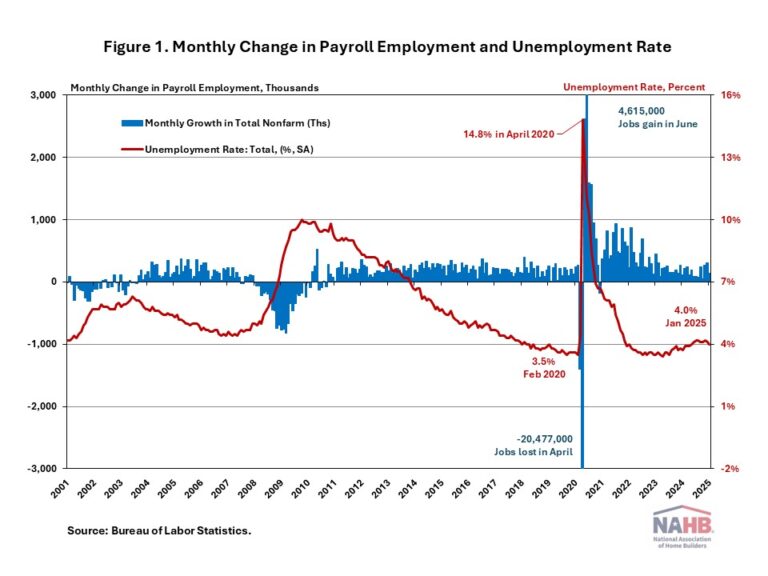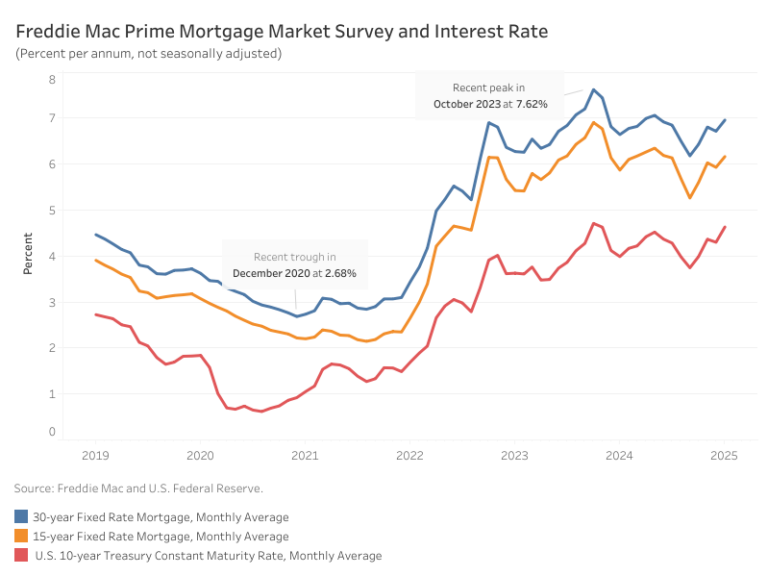Nonfarm payroll employment increased in 31 states in January compared to the previous month, while it decreased in 19 states and the District of Columbia. California reported no change during this time. According to the Bureau of Labor Statistics, nationwide total nonfarm payroll employment increased by 125,000 in January following a gain of 323,000 jobs in December.
On a month-over-month basis, employment data was most favorable in Texas, which added 27,900 jobs. New York came in second (+20,100), followed by Florida (+16,500). Meanwhile, a total of 101,100 jobs were lost across 19 states and the District of Columbia, with Georgia reporting the steepest job losses at 28,200. In percentage terms, employment increased the highest in South Dakota at 0.5%, while Missouri saw the biggest decline at 0.6% between December and January.
Year-over-year ending in January, 2.0 million jobs have been added to the labor market, which is a 1.3% increase compared to the January 2024 level. The range of job gains spanned from 400 jobs in Massachusetts to 187,700 jobs in Texas across 48 states. Two states and the District of Columbia lost a total of 14,800 jobs in the past 12 months, with Arizona reporting the steepest job losses at 10,200. In percentage terms, the range of job growth spanned 2.8% in Alaska to 0.1% in California. Massachusetts was unchanged while District of Columbia, Arizona, and West Virginia declined by 0.1%, 0.3%, 0.5% respectively.
Construction Employment
Across the nation, construction sector jobs data —which includes both residential and non-residential construction—showed that 23 states reported an increase in January compared to December, while 21 states lost construction sector jobs. The six remaining states and the District of Columbia reported no change on a month-over-month basis. Utah, with the highest increase, added 3,300 construction jobs, while Florida, on the other end of the spectrum, lost 5,100 jobs. Overall, the construction industry added a net 2,000 jobs in January compared to the previous month. In percentage terms, Idaho reported the highest increase at 4.0% and Arkansas reported the largest decline at 1.6%.
Year-over-year, construction sector jobs in the U.S. increased by 178,000, which is a 2.2% increase compared to the January 2024 level. Texas added 19,800 jobs, which was the largest gain of any state, while California lost 27,600 construction sector jobs. In percentage terms, Idaho had the highest annual growth rate in the construction sector at 11.1%. Over this period, Massachusetts reported the largest decline of 3.9%.
Discover more from Eye On Housing
Subscribe to get the latest posts sent to your email.
This article was originally published by a eyeonhousing.org . Read the Original article here. .
